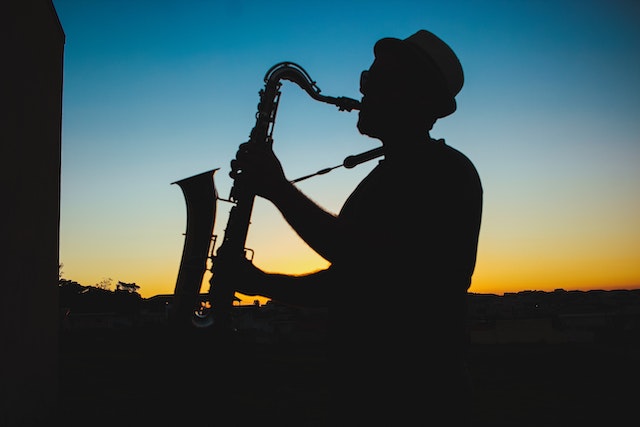
Where did Jazz come from? It started in New Orleans in the 1890s.
What is Jazz? The word “jazz” probably comes from “jasm”, a slang expression meaning pep or energy. Jazz started out as jas and didn’t become jazz until about 1916. That means jazz wasn’t really considered a separate style of music for almost two decades after it started. Jazz is a style of music that relies heavily on improvisation and personal style. The instruments are used to mimic voices and any feeling can be expressed through them. There is a lot of call and response where one instrument calls another, which responds. There is so much improvisation that a lot of the solos are made up on the spot. Jazz players are truly masters of their instruments.
Jazz evolved from a combination of the blues and ragtime, so we need to look at those first. However, all of these types of music have many different categories and are all difficult to define. Both ragtime and the blues appeared after the end of the American Civil War. When the North won in 1865, the 13th amendment to the constitution was ratified and slavery was abolished. African American slaves were now able to congregate in town, even though there was still heavy segregation. They started to create different types of music that were a mix of many other types.
Ragtime was created in the 1890s in the American south and appears to have been centered around Missouri. Ragtime is music that was created for the piano, and it had different rhythms that were played together, which gave it the expression “ragged”. It has a lot of influences from the rhythms of African music that the African American slaves were singing. There was usually a rhythm provided by a bass. There were some famous ragtime composers, such as Scott Joplin, who sold their compositions across the country. There were also itinerant pianists who travelled around, playing at bars.
The blues began in about the 1860s. It started out as songs sung on the plantations by African American slaves. The slaves sang songs from their homelands, coupled with spiritual songs, chants, work songs, hymns, country music, and drum music. One aspect of this music was the call and response, that would become a big part of jazz. The blues began life on the Mississippi Delta, near to New Orleans. A lot of musicians would travel round the south playing the blues in taverns and drinking halls. Once slavery was abolished, the African American players didn’t want to be associated with the songs that had been sung on plantations because it reminded them of harder days, so the blues gradually evolved away from that.
In New Orleans, slaves were allowed to meet on Sundays when they had no work. They often met in Congo Square in New Orleans. There was no rule saying that they could meet, and many slaves weren’t allowed to. There were also groups of people who threatened their gatherings. In 1817, the mayor of New Orleans said they could gather, but only in Congo Square. They could talk, trade, sing, and dance. They blended different types of African music. New Orleans had people from many different parts of the world, and there was a mix of cultures and musical tastes. After slavery was abolished, more African Americans could gather, and musical instruments were becoming cheaper. They started combining ragtime, the blues, and adding in other instruments, which gave them a whole new type of music. A music that was called “jas”.
Racism and segregation were so severe in the early days of jazz, that African Americans were not allowed to be marketed to white people. The record companies thought that only white musicians should be allowed to play the blues and jazz. They severely limited distribution and white and black musicians were not allowed to play together. That is why most of the early blues and jazz recordings are from white musicians. It was probably not until the middle of the 20th century that African American jazz and blues was widely sold. And people called rock and roll, which was heavily influenced by jazz and blues, “race music” as a derogatory term. During the prohibition era, jazz was often played in speakeasys and became associated with immorality. It wasn’t probably until just after the Second World War that jazz became mainstream and accepted. It would take a lot longer before African American musicians were treated fairly. And this is what I learned today.
Sources
https://www.allaboutjazz.com/a-brief-history-of-the-blues-by-ed-kopp
https://www.loc.gov/item/ihas.200035811/
https://www.vermontpublic.org/programs/2016-08-01/timeline-blues-ragtime-and-jazz
https://www.neworleans.com/things-to-do/music/history-and-traditions/birthplace-of-jazz/
https://en.wikipedia.org/wiki/Congo_Square
https://www.bbc.com/travel/article/20120224-travelwise-the-birthplace-of-jazz
https://en.wikipedia.org/wiki/Jazz
https://americanhistory.si.edu/smithsonian-jazz/education/what-jazz
https://www.neworleans.com/things-to-do/music/history-and-traditions/birthplace-of-jazz/
https://blogs.loc.gov/folklife/2017/02/birth-of-blues-and-jazz/
